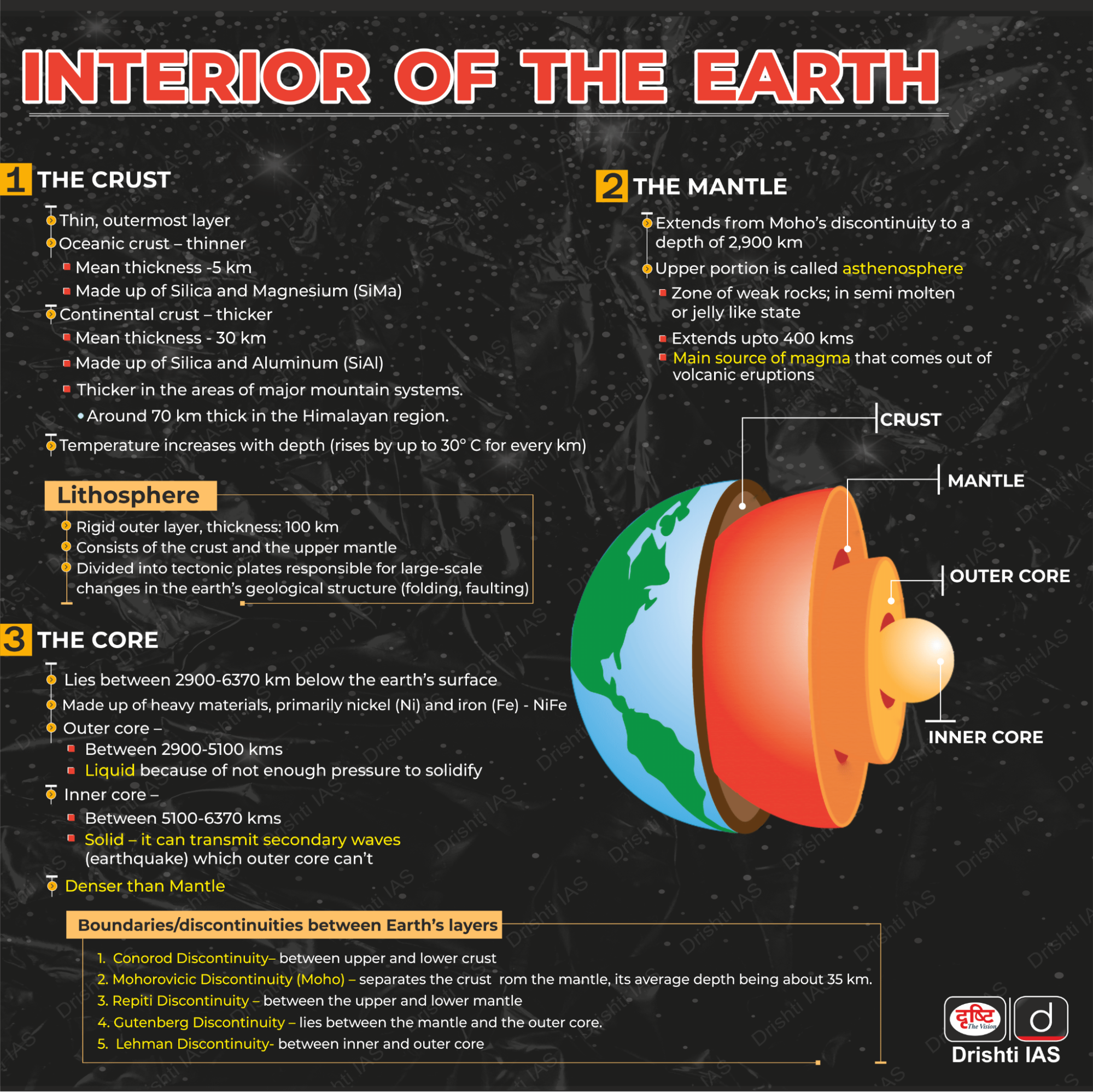Important Facts For Prelims
E Prime Layer
- 24 Nov 2023
- 3 min read
Why in News?
According to a research conducted at the Advanced Photon Source of Argonne National Lab and PETRA III of Deutsches Elektronen-Synchrotron in Germany, a new mysterious layer called the E prime layer has formed on the outer part of the Earth's core.
- This happened because surface water penetrated deep into the planet, changing the composition of the outer region of the liquid metal core.
How Did E Prime Layer Develop Over Time?
- Tectonic Plates Transporting Water to Earth's Core:
- New research reveals a fascinating process where tectonic plates, carrying surface water, have been transporting it deep into the Earth's interior over billions of years.
- As this water reaches the core-mantle boundary, located approximately 1,800 miles beneath the Earth's surface, it instigates significant chemical changes that directly influence the structure of the Earth's core.
- Chemical Reactions and Structural Impact on Earth's Core:
- Observations by scientists highlight the chemical reactions occurring when subducted water interacts with core materials under high pressure.
- This interaction results in the creation of a distinct layer in the outer core characterized by high hydrogen content and low silicon levels, forming a film-like structure.
- Additionally, the process generates silica crystals that ascend into the mantle, causing compositional changes.
- These alterations in the liquid metallic layer have potential implications, including reduced density and modified seismic characteristics.
- Significance of E Prime Layer in Understanding Earth More:
- This finding suggests a more intricate global water cycle than previously recognized. The altered core layer carries significant implications, shedding light on the interconnected geochemical processes that link surface water cycles with the deep metallic core.
UPSC Civil Services Examination, Previous Year Question (PYQ)
Prelims
Q 1. In the structure of planet Earth, below the mantle, the core is mainly made up of which one of the following? (2009)
(a) Aluminium
(b) Chromium
(c) Iron
(d) Silicon
Ans: (c)
Mains
Q. Define mantle plume and explain its role in plate tectonics. (2018)





